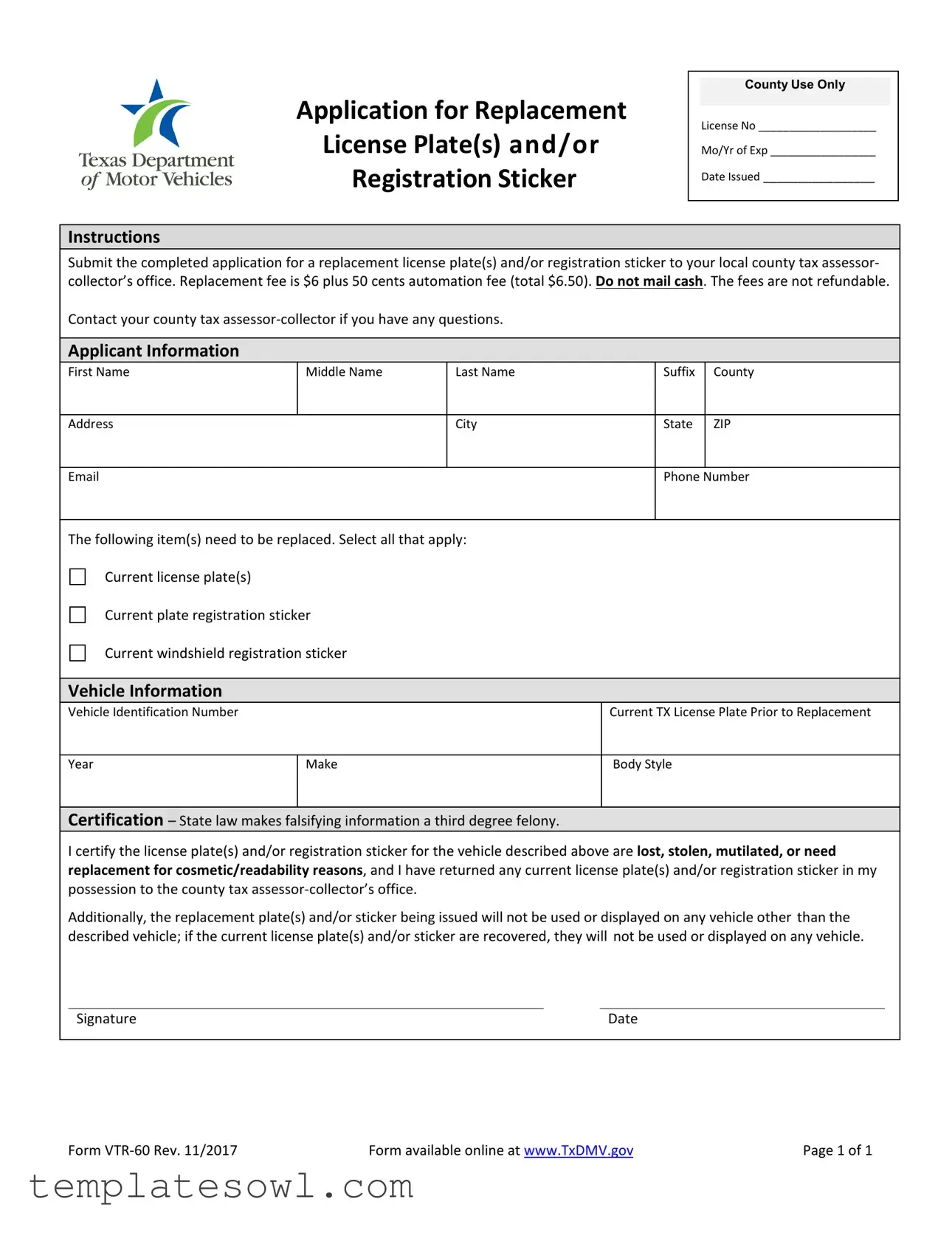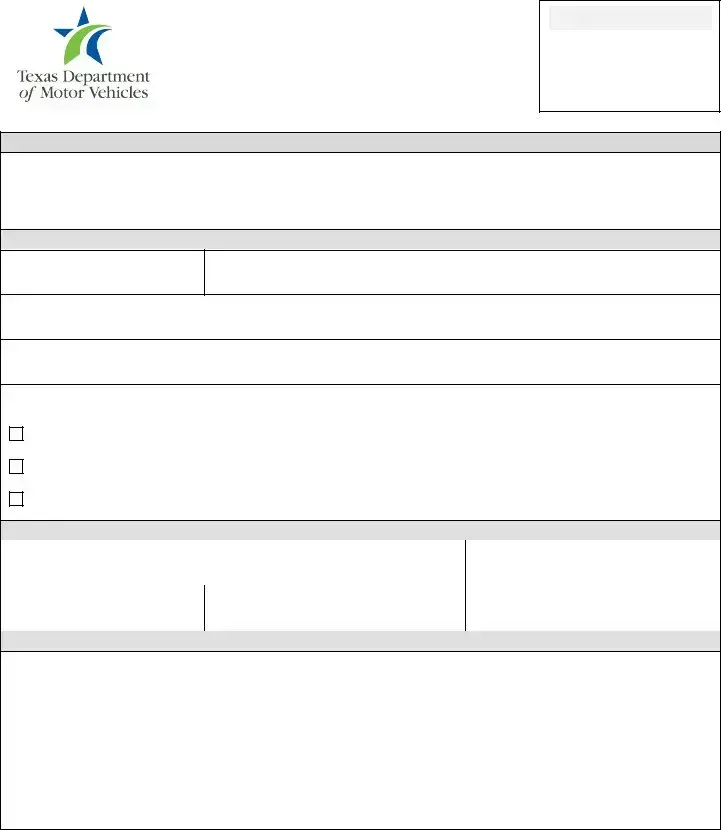What is the Texas VTR 60 form?
The Texas VTR 60 form is used to apply for replacement license plates and/or registration stickers in Texas. This form allows vehicle owners to report lost, stolen, damaged, or unreadable license plates or registration stickers. Completing this form is the first step in obtaining new plates or stickers to ensure your vehicle remains legally registered.
How do I submit the VTR 60 form?
You must submit the completed VTR 60 form to your local county tax assessor-collector’s office. It is advisable to deliver it in person or through mail. If you choose to mail the form, avoid sending cash. Instead, include a check or money order for the required fees.
What is the fee for replacing license plates or registration stickers?
The total fee for replacing license plates or registration stickers is $6.50. This includes a $6 replacement fee plus an additional 50 cents for automation. Keep in mind that these fees are not refundable regardless of the circumstances.
What do I do if I have questions about the form or process?
If you have questions about the VTR 60 form or the replacement process, reach out directly to your county tax assessor-collector's office. They can provide specific guidance and address any of your concerns.
What information is required on the VTR 60 form?
You will need to provide personal information such as your name, address, and contact details. Additionally, you must include your vehicle's identification number (VIN), current license plate number, and any other relevant vehicle information. Be sure to indicate which items you need to replace.
What happens if my lost or stolen license plate is found after I apply for a replacement?
If you recover your lost or stolen license plate after receiving a replacement, you should not use or display the original plate on any vehicle. The replacement must only be used on the vehicle described in your application. The original plate must be returned to the county tax assessor-collector’s office.
Is there a risk of providing false information on the VTR 60 form?
Yes, there can be serious consequences for providing false information on the VTR 60 form. State law classifies falsifying information as a third-degree felony. It is essential to provide accurate and truthful information when completing the form.
Can I apply for multiple replacement items on a single VTR 60 form?
Yes, you can apply for replacements for multiple items on a single VTR 60 form. The form allows you to select all applicable items, such as current license plates or registration stickers. Make sure to clearly indicate each item that needs replacement to ensure accurate processing.

